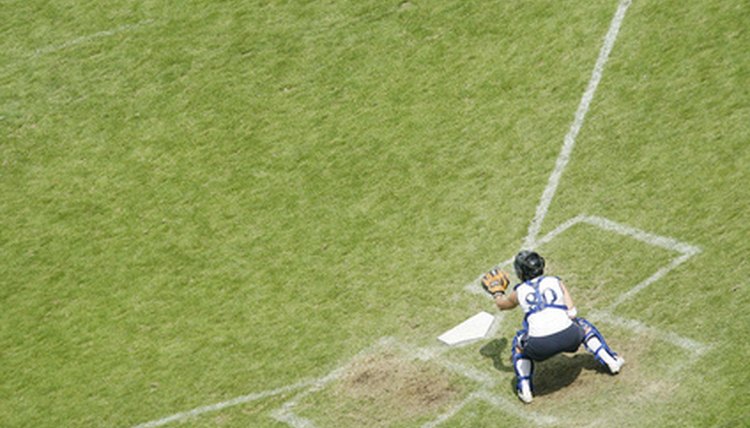Baseball Rules for a Ball Out of Play

The rules of baseball are complicated and involved, even to the experienced fan. When a ball goes out of play, the umpire calls time out and might move base runners as a result of the play. And in at least one case when a ball nominally goes out of play but remains in control of the fielder, the ball remains in play.
Thrown Ball Out of Play
Errors are a big part of baseball. Throwing errors can cause significant problems for the defensive team. On a ground ball to an infielder, the infielder will try to throw the ball to the first baseman. If the ball gets by the first baseman and skips out of play, the umpire will place the batter at second base. The rule is that when the defensive team puts the ball out of play, the batter will get two bases from the base he was at when the play started. Because the batter started the play at home, two bases would put him at second base. It doesn't matter that he was just a few feet from the base when it went out of play. He is entitled to second base and that's it.
Batted Ball Out of Play
If a batter hits a drive to the outfield that bounces over the fence, the ball is out of play. The umpire will call timeout and award the batter second base for a ground-rule double. The same holds true if a ball bounces out of play and then rebounds to play. The ball is dead and a ground-rule double is awarded. If a fan reaches out and interferes with a ball that is in play, the umpire will stop play. He will then award the runner a base based on the way he thought the play would turn out. If the fan interference kept the runner from getting to third, the umpire will put the runner on third base. If he thinks the runner would have gotten to second, he will put him on second. If he believes the fielder would have caught a fly ball had the fan not interjected himself into the situation, he would call the batter out.
In Play
If an infielder is chasing a foul pop-up and makes the catch in play and then falls into the dugout when there are runners on base, the ball is in play. The dugout is ordinarily out of play but when the fielder falls into the dugout on his own, the runner is allowed to tag. The fielder will have to get up and throw the runner out if he wants to prevent the runner from advancing.
References
Writer Bio
Steve Silverman is an award-winning writer, covering sports since 1980. Silverman authored The Minnesota Vikings: The Good, The Bad and The Ugly and Who's Better, Who's Best in Football -- The Top 60 Players of All-Time, among others, and placed in the Pro Football Writers of America awards three times. Silverman holds a Master of Science in journalism from the Medill School of Journalism.
